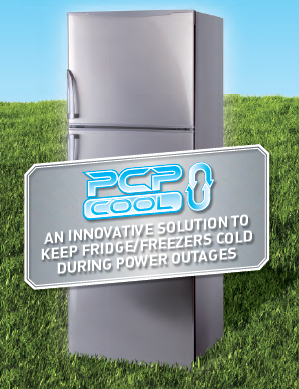What is a Phase Change Material(PCM)
Most pure substances change phase between a liquid, a solid and/or gas, at some temperature (and pressure). A PCM is a non-scientific expression which refers to any substance which has a single “sharp” melting point and a sufficiently large latent heat of fusion that makes it of interest as a potential heat energy store.
A simplification of the theory:
When heat energy is applied to (or removed from) a mass of substance, it is most usually associated with an increase (or reduction) in the temperature of that mass of substance. Every substance has a characteristic heat capacity (or specific heat) which quantifies the amount of energy that is required to change a given mass of that substance by one degree (a standard unit is kJ/kgoC).
However, heat energy applied to a mass of substance when that substance is about to undergo a phase change (eg. at its melting point temperature), then the heat energy being applied will continue to be absorbed (or released) without changing the temperature of the mass of substance until all of the substance has changed phase. The amount of energy a substance can absorb (or release) at its phase change temperature before any temperature change is known as its Latent Heat (or latent energy). The latent heats per kilogram vary substantially from substance to substance and reflect in large part, the variation in strength of the molecular bonding within the given substance at the phase change temperature. Every substance which undergoes a phase change has its own characteristic latent heat. If the phase change is from solid to liquid then it is referred to as latent heat of fusion. If the phase change is from liquid to gas then it is referred to as latent heat of vaporization.
The latent heat of a substance is invariably larger than the heat capacity for the same quantity of substance to change its temperature by 1 degree. In many cases the latent heat can be many times greater than its heat capacity. For example:
The same amount of heat energy required to completely melt 1 kilogram of ice at 0oC, is sufficient to increase the temperature of 1 kilogram of water from 0oC to 80oC.





